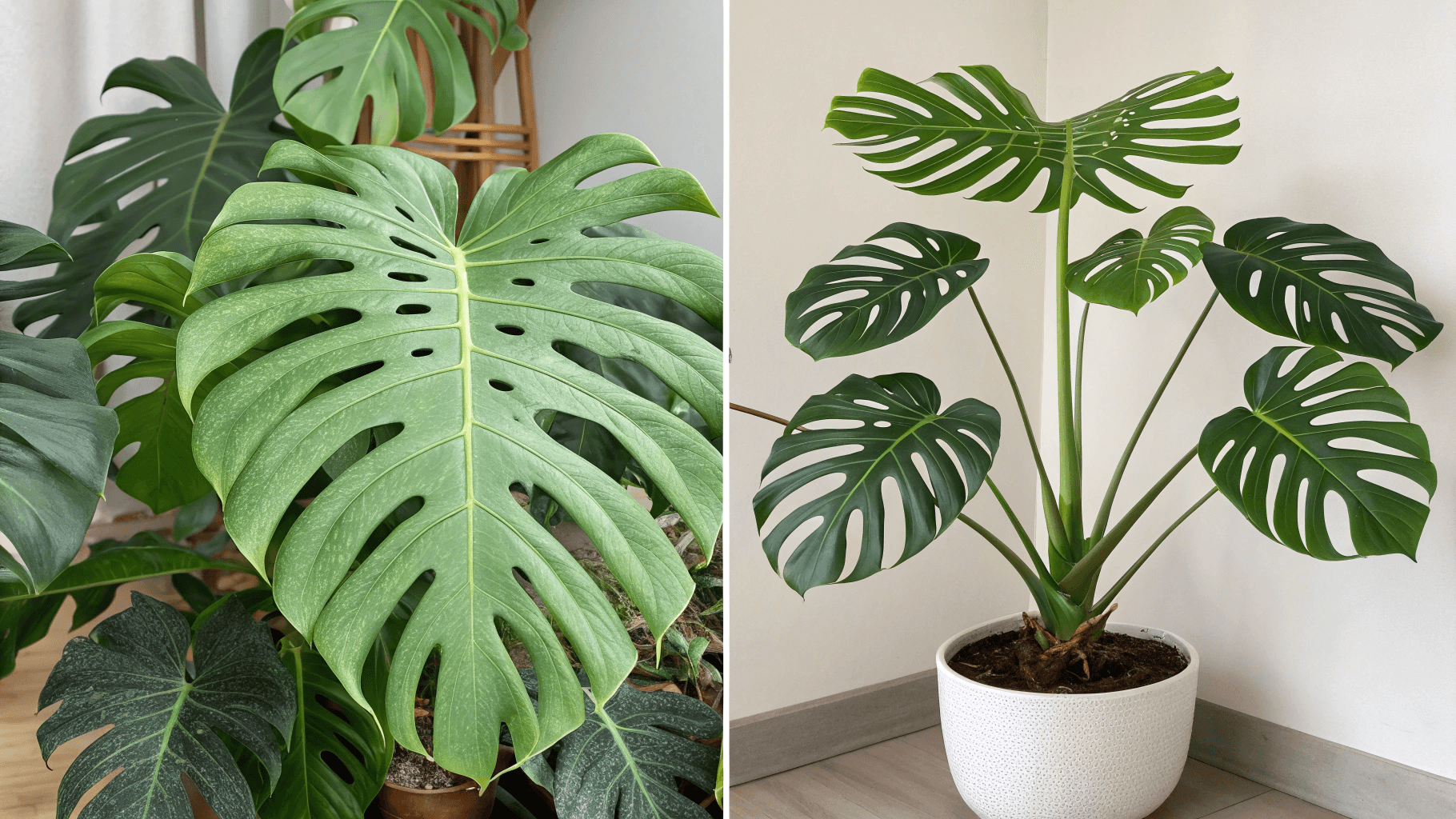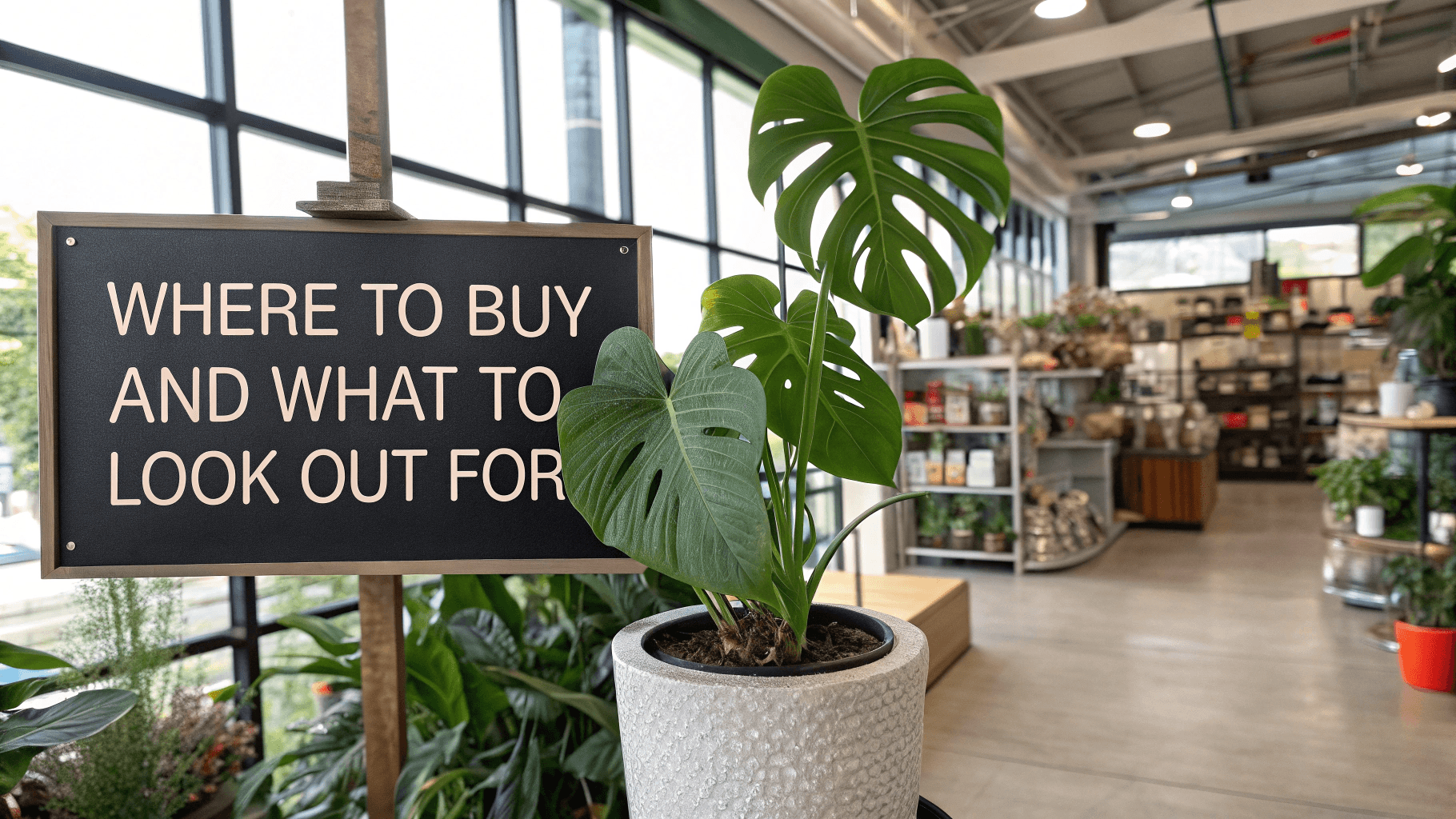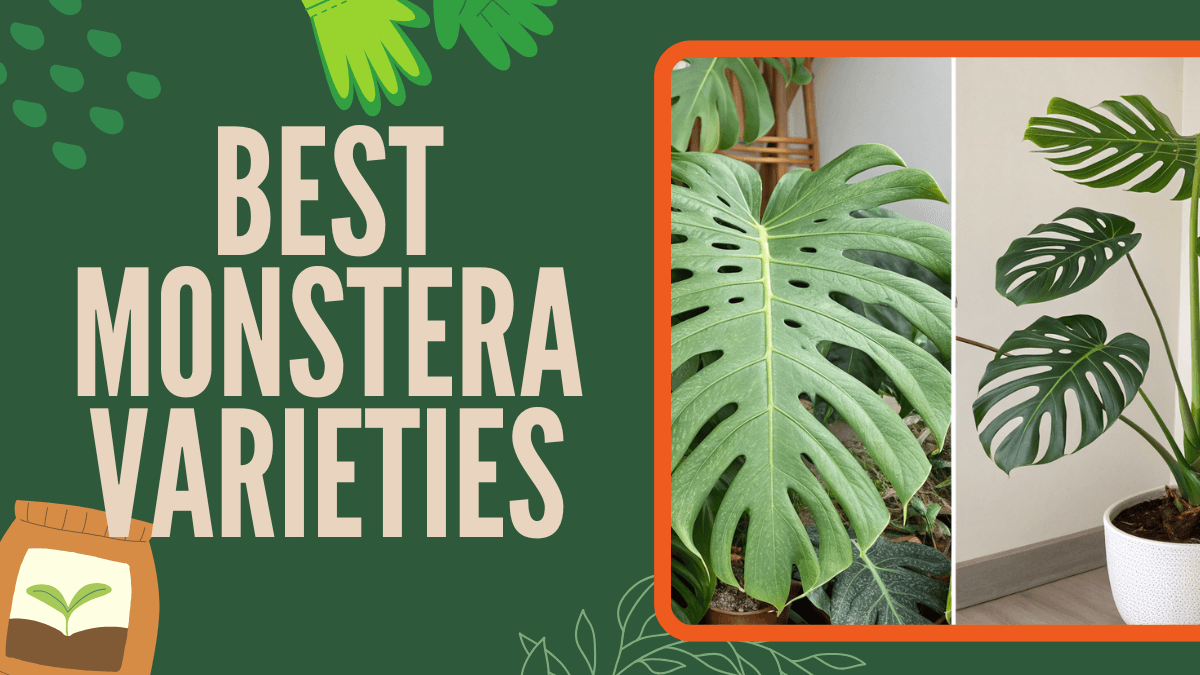Monstera plants have taken the indoor plant world by storm, and it’s not hard to see why. With their dramatic, fenestrated leaves and tropical vibes, these plants are perfect for adding a touch of nature to your home. But with so many Monstera varieties available, choosing the right one can feel overwhelming.
Should you choose a compact variety suitable for a small apartment or a climbing giant that will dominate your living room? The truth is, there’s a Monstera for every space, budget, and style.
Table of Contents
Criteria for Choosing the Right Monstera

Before you pick your Monstera, it’s essential to consider a few key factors. These criteria will help ensure that the plant you choose not only looks great but also thrives in your home environment.
1. Size Matters
Monstera range from small, tabletop-friendly plants to massive climbers that can reach ceiling height. If you live in an apartment or have limited space, a smaller variety like Monstera adansonii or Monstera obliqua may be ideal. Larger varieties, such as the classic Monstera deliciosa, are perfect for open spaces where the plant can climb or spread naturally.
2. Light Requirements
While Monstera are fairly adaptable, light conditions can determine their growth and leaf development. Most thrive in bright, indirect light, which encourages healthy leaves and vibrant variegation. Varieties with white or yellow variegation, such as Monstera deliciosa ‘Albo Variegata,’ are more sensitive to direct sunlight and need gentle, filtered light to prevent leaf burn.
3. Variegation
Variegation refers to the patterning on a plant’s leaves – white, yellow, or cream-colored patches mixed with green. Variegated Monstera are visually striking and can be a statement piece in your home. However, they are slower-growing and often more expensive than their all-green counterparts. If you’re a beginner, starting with a solid green variety can be more forgiving.
4. Climbing vs. Compact
Some Monstera naturally climb using aerial roots, while others stay more compact. Climbing varieties like Monstera deliciosa or Monstera Thai Constellation do best with support, such as a moss pole or trellis, and can eventually become impressive focal points. Compact varieties, like Monstera adansonii ‘Monkey Mask,’ are ideal for tabletops or shelves and don’t require extensive training.
Top 8 Indoor Monstera Varieties
Here are eight of the most popular and visually stunning Monstera varieties you can grow indoors, complete with details on size, variegation, and ideal growing conditions.
1. Monstera Deliciosa
- Size: Can grow up to 10 feet indoors with support
- Variegation: Typically all green, though variegated forms exist.
- Ideal Conditions: Bright, indirect light; moderate watering.
The classic Monstera deliciosa is a staple in many homes thanks to its iconic split leaves. It climbs naturally, making it perfect for tall living spaces.
2. Monstera Adansonii
- Size: 2–3 feet, trailing or climbing
- Variegation: Rare variegated forms exist, mostly green.
- Ideal Conditions: Moderate indirect light; humidity-friendly.
Also known as the “Swiss Cheese Vine,” this Monstera has smaller, hole-punched leaves, making it great for shelves or hanging baskets.
3. Monstera Obliqua
- Size: 1–2 feet indoors
- Variegation: Extremely holey, almost lace-like leaves.
- Ideal Conditions: High humidity; low to medium light.
Obliqua is one of the rarest Monsteras. Its delicate leaves make it a collector’s dream, but it’s also finicky, requiring careful humidity management.
4. Monstera Thai Constellation
- Size: Up to 6 feet indoors
- Variegation: Creamy white splashes on dark green leaves.
- Ideal Conditions: Bright indirect light; consistent watering.
This hybrid is known for its striking variegation and relatively easy care compared to other variegated Monstera. It’s a showstopper in any indoor garden.
5. Monstera Deliciosa ‘Albo Variegata’
- Size: Up to 6 feet indoors with support
- Variegation: White patches on green leaves, unique patterns on each leaf.
- Ideal Conditions: Bright, indirect light; avoid full sun on variegated parts.
Albo Variegata is highly sought after for its unique white variegation. It grows more slowly and often comes at a premium price, but it’s worth it for collectors.
6. Monstera Pinnatipartita
- Size: Up to 4–6 feet indoors
- Variegation: Mostly green; splits and holes become more pronounced with maturity.
- Ideal Conditions: Bright, indirect light; moderate watering.
This variety starts with solid green leaves that gradually develop deep fenestrations as it matures. It’s perfect if you want a classic Monstera look but with a slightly different leaf shape.
7. Monstera Siltepecana
- Size: 2–3 feet indoors, trailing
- Variegation: Silvery-green leaves with dark green veins.
- Ideal Conditions: Indirect light; moderate humidity.
Siltepecana is a climbing Monstera with beautiful silver-toned leaves. Its trailing habit makes it ideal for hanging baskets or vertical displays.
8. Monstera Dubia
- Size: 1–2 feet indoors; climbs aggressively
- Variegation: Juvenile leaves shingle tightly to a surface; mature leaves are fenestrated.
- Ideal Conditions: Moderate indirect light; support for climbing.
Dubia is unique because it starts as a flat-leaved vine that shingles along a moss pole, eventually developing classic Monstera splits as it matures.
Rare vs. Common Monstera Varieties – Pros and Cons
When choosing your Monstera, it’s important to weigh the benefits of rare versus common varieties.

Common Varieties
Pros:
- Easier to find and purchase.
- Generally, more forgiving in care.
- More affordable.
Cons:
- Less visually unique.
- It may lack the dramatic variegation or unusual leaf shapes of rare varieties.
Examples: Monstera deliciosa, Monstera adansonii.
Rare Varieties
Pros:
- Stunning, one-of-a-kind foliage.
- Makes a statement in any indoor garden.
- Collectors’ items that can increase in value.
Cons:
- Often expensive.
- Slower-growing and sometimes finicky.
- Harder to find in nurseries.
Examples: Monstera obliqua, Monstera deliciosa ‘Albo Variegata,’ Monstera Thai Constellation.
Where to Buy and What to Look Out For
Finding the perfect Monstera involves more than just choosing a variety. Here’s what to keep in mind when purchasing:

1. Buy from Reputable Sellers
Whether online or in-store, look for nurseries and plant shops with positive reviews. For online purchases, reputable sellers often provide detailed photos and care instructions.
2. Check for Plant Health
Healthy Monstera have firm, vibrant leaves and strong roots. Avoid plants with yellowing leaves, brown spots, or signs of pests like tiny webs or sticky residue.
3. Authenticity Matters
Variegated and rare Monstera are often replicated or misrepresented. Ensure the seller clearly labels the plant and, if possible, provides certification or proof of propagation.
4. Consider Your Budget
Some rare Monstera can cost hundreds or even thousands of dollars. Start with a more common variety if you’re new to indoor gardening, and gradually expand your collection.
For more detailed guidance on caring for your Monstera, including watering, propagation, and pest prevention, check out the Monstera Plant Care Guide.
Conclusion
Choosing the right Monstera for your indoor space doesn’t have to be complicated. By considering size, light, variegation, and climbing habits, you can find a plant that suits your lifestyle and aesthetic. Whether you opt for a common, low-maintenance Monstera deliciosa or splurge on a rare Monstera obliqua, these tropical beauties bring life, texture, and personality to any home.
With proper care, your Monstera can thrive for years, becoming a stunning focal point and a conversation starter. Start with one plant, experiment with placement, and watch your indoor jungle grow.


 ChatGPT
ChatGPT
 Perplexity
Perplexity
 Claude
Claude
Leave a Reply